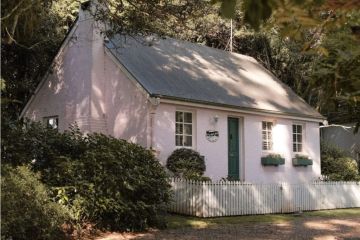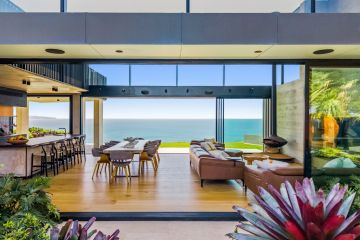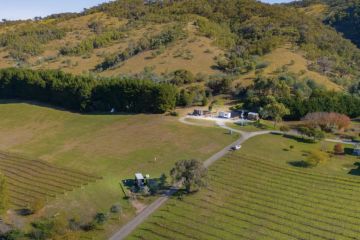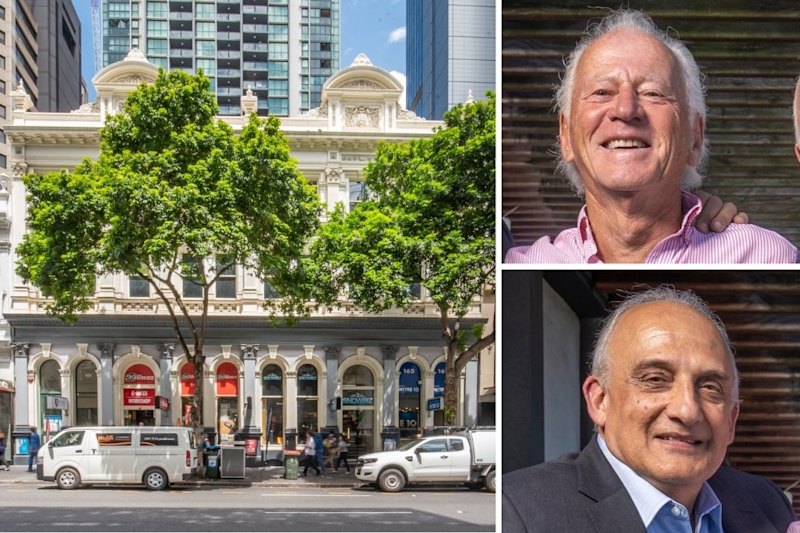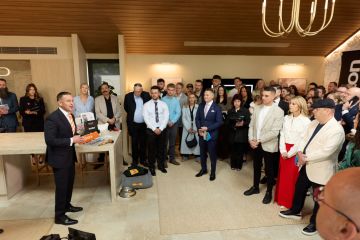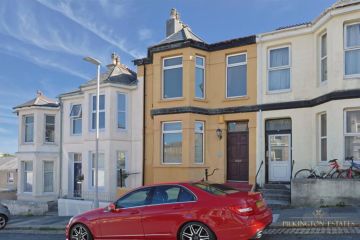The Block 2020: The judges reveal how COVID-19 shapes the new season
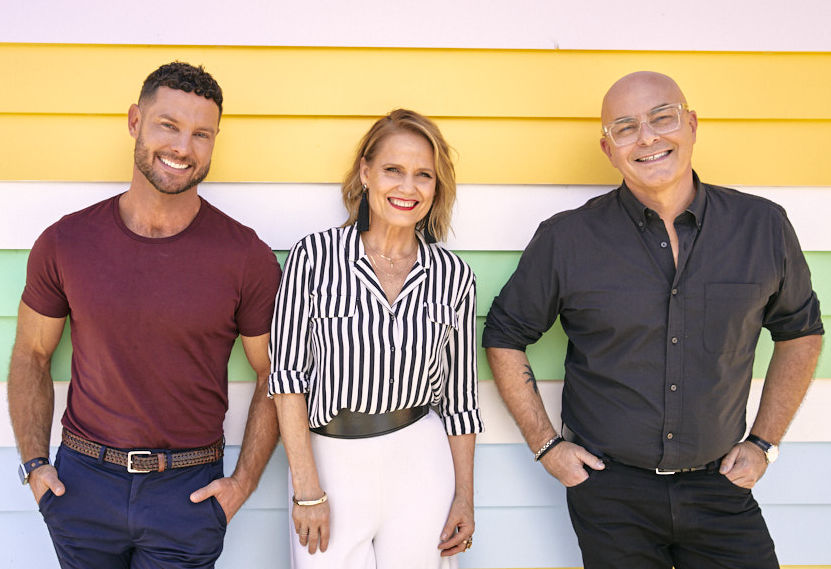
On a crisp day in the Melbourne bayside suburb of Brighton, the judges on The Block took one last look around the newly renovated homes and agreed – this had been the best Block yet.
“We do say it season after season,” laughs interior designer and judge on the long-running television show Darren Palmer. “But it really is the best Block ever.”
Fellow judges interior designer Shaynna Blaze and former magazine editor and designer Neale Whitaker agree, this Block is different in more ways than one.
“It feels like the longest and the shortest, craziest Block we’ve ever done,” Blaze says.
As most would guess, a global pandemic throws up all sorts of curve balls when you’re undertaking a large-scale construction project and filming a television show – even one that’s been running for 16 seasons.
This year’s contestants were sent home to their families for six weeks right in the middle of the project, as the whole country went into lockdown in an effort to curb the spread of COVID-19.
View The Block properties for sale
House 1, Harry and Tash: 364 New Street, Brighton
House 2, Sarah and George: 362B New Street, Brighton
House 3, Daniel and Jade: 362A New Street, Brighton
House 4, Luke and Jasmin: 360B New Street, Brighton
House 5, Jimmy and Tam: 360A New Street, Brighton
It wasn’t just the extreme circumstances of the pandemic that made this season particularly different, it was also the houses the contestants were tasked with renovating; one from each decade between the 1910s and the 1950s, relocated to The Block site in Brighton.
“Those decades are so different even just from beginning to end, let alone from decade to decade,” Palmer says.
Part of the rules for the contestants was to stay true to the era of their house – and the judges say they were not going to let them get away with any extreme deviations. Though, Whitaker says, the trick was to decide on the defining characteristics of the era and then bring them into a modern home.
“I think it’s really important that even when they’re dealing with the front part of the house which is the period part of the house, they don’t want it to be like a slavish reproduction of the era, because no one wants to live in a museum,” Whitaker says.

The five decades each had distinctive design elements, often reflecting what was going on in the world at the time, Palmer says.
He says the high detail in the Federation homes of the early 1910s was foregone during the first part of post-war 1920s, when frugality was more important than fine features.
Then later in the decade, the opulent art deco style emerged, only to be thwarted in the late ’20s and early ’30s by more pared-back design brought on by the Great Depression.
Another world war in the ’40s saw simplicity in design take centre stage, Palmer says, and by the ’50s what came to be known as mid-century modernism took hold.
“The world wars did really define the changes between styles more than the decades themselves,” he says. “It actually really impacts upon the detail level of the architecture because how fruitful society is dictates how much they spend on the detail in their houses.”
In a twist even the judges could never have seen coming, the COVID-19 pandemic changed the way the contestants approached the design of the modern extensions to their houses, just as the world wars and the depression influenced design in the first half of the 20th century.
“We have had more of a discussion in this season about working from home spaces and how important they are,” Palmer says. “Also things like home gyms and that whole idea of cocoon living is now more than ever part of the dialogue when we’re judging the spaces and when we’re looking at the contemporary part of the homes.”
Blaze says the contestants took the six-week lockdown and shutdown of The Block to re-group and rethink their designs, coming back with not only a fresh outlook, but a more mature one.
“We all agreed there was a lot more sophistication when they’d come back,” Blaze says. “And also, they didn’t sweat the small stuff – it was like they said, ‘The world’s gone mad, let’s just do great stuff.’”
She said it worked quite well that the lockdown happened once the contestants had finished the front, more traditional section of the house, returning to get started on the modern extension.
“That’s what’s going to be very exciting when these houses are revealed – how well it works with the modern world,” she says.
“One of the things that I’ve always done in design is to treat your space as though you’re always on a holiday. We’re in that world now. Everybody’s realised the value of their home, their interior, and I think a lot of thought has gone into that type of world in the last part of The Block.”
It’s not that the contestants completely changed their plans during their time in lockdown, Whitaker says, but more that they thought about what might be necessary in a new, post-COVID-19 pandemic world, elevating their designs to a standard never before seen on the show.
“The contestants in this season seem to have thought through the details more than in any other season we’ve seen,” he says.
“I think it is because of that new importance on home and what home means, which has been heightened by the pandemic crisis that we’ve all lived through.”
Melbourne has seen some of the toughest conditions in the country during the crisis, and a second lockdown period has meant the city has not been able to do much of what it does best.
But Blaze says Melbourne is uniquely placed to host the show each year, not only because of its great array of homewares stores – which are much easier to access than those in Sydney in terms of the traffic – but because of its feeling, and the energy of the city.
“We are an arts culture here, and architecture and design really comes into that,” she says.
Even Englishman-turned-Sydneysider Whitaker agrees; “Melbourne is the best city in Australia.”
“Melburnians love The Block, and I think they love having The Block in their city,” he says.
Palmer says homes with a heritage frontage and a modern addition are done better in Melbourne than any other city in Australia, partly because councils have a “progressive approach” to planning.
“The Block is really about finding something old and then adding something new – it’s really perfectly situated in Melbourne because Melbourne does it best.”
The judge’s Melbourne favourites:
Shaynna
A walk around The Tan and then breakfast at Entrecote, South Yarra
Birds Basement Jazz Club, Singers Lane, Melbourne
National Gallery of Victoria’s summer music nights
Queen Vic Night Market
Darren
Brighton Baths
The Prince Hotel, St Kilda
City laneway restaurants and bars including Eau De Vie and Tonka
Neale
Royal Botanic Gardens and Fawkner Park, South Yarra
Heide Museum of Modern Art, Heidelberg
Milk the Cow, St Kilda
Coda, Flinders Lane
The Block 2020 premieres on Sunday August 23 at 7pm on Nine and 9Now.
We recommend
We thought you might like
States
Capital Cities
Capital Cities - Rentals
Popular Areas
Allhomes
More
